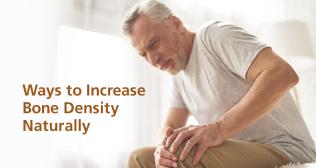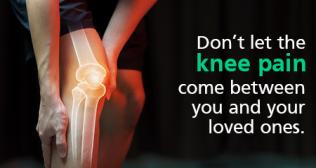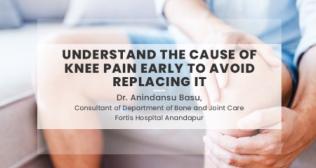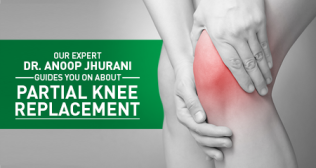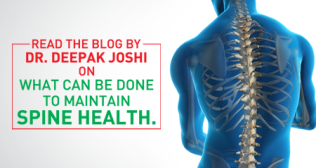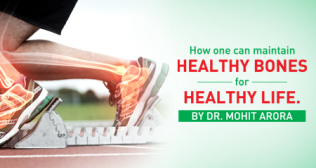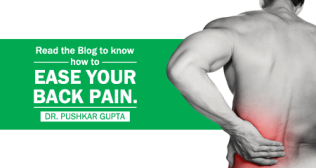
Chondromalacia Patella: Causes, Symptoms, and Treatment Options
Chondromalacia patella is one of the most common causes of knee pain, especially in young adults and athletes. It refers to the softening and breakdown of the cartilage under the kneecap (patella), which leads to inflammation, discomfort, and impaired movement. When this cartilage wears down, the smooth motion between the kneecap and thighbone is disrupted, often resulting in a grinding or aching sensation during activities. Although it’s often considered a minor condition, if left unmanaged, it can lead to long-term joint damage and loss of mobility.
This condition can affect both active and sedentary individuals. It is often confused with general anterior knee pain, but the underlying cause lies specifically in the cartilage beneath the patella. Recognizing the early signs and getting proper treatment can prevent the condition from worsening and improve long-term knee function.
What Is Chondromalacia Patella?
Chondromalacia patella is the deterioration of the articular cartilage on the underside of the kneecap. This cartilage typically allows smooth motion within the patellofemoral joint. When it becomes damaged due to overuse, misalignment, or injury, movement becomes painful and less efficient.
The condition is graded from I to IV, with grade I indicating mild softening and grade IV showing complete cartilage loss and exposure of underlying bone. While it is not the same as osteoarthritis, advanced cases of chondromalacia may increase the risk of developing arthritis in the patellofemoral joint. It is particularly prevalent in adolescents, women, and individuals involved in repetitive knee movement activities like running, cycling, or squatting.
Chondromalacia Patella Causes
There are multiple chondromalacia patella causes, often related to mechanical stress or underlying structural issues:
- Kneecap Misalignment: If the patella doesn't move smoothly over the femur, pressure becomes uneven, causing excess wear on cartilage.
- Muscle Imbalance: Weakness in the quadriceps or hip muscles can cause the patella to track improperly, contributing to tissue damage.
- Overuse: Repeated stress from activities like running, jumping, or kneeling can lead to microtrauma in the joint.
- Injury: A fall or blow to the knee may directly damage the cartilage or trigger inflammation that accelerates wear.
- Flat Feet or Poor Biomechanics: Improper lower limb alignment changes the way forces travel through the knee, leading to stress buildup on the patella.
- Obesity: Extra body weight increases joint pressure, making the cartilage more vulnerable to breakdown.
- Rapid Growth: In teenagers, bone growth can outpace muscle development, creating imbalances that affect patellar tracking.
Understanding these risk factors is essential in both treating the condition and preventing its recurrence.
Recognizing Chondromalacia Patella Symptoms
Identifying chondromalacia patella symptoms early helps avoid chronic pain and degeneration. Common symptoms include:
- Knee Pain: A dull ache at the front of the knee, especially noticeable when using stairs, kneeling, or sitting for long periods.
- Grinding or Clicking: A sensation of rough movement or crepitus when bending or extending the knee.
- Swelling or Puffiness: Mild inflammation around the kneecap, often with tenderness.
- Weakness or Instability: The knee may feel unstable or prone to giving way under pressure.
The symptoms often worsen with activity and improve with rest. For many, the pain intensifies after sitting for extended periods, leading to what's known as the “theater sign.”
Diagnosing Chondromalacia Patella
Proper diagnosis is necessary before starting any chondromalacia patella treatment. Your doctor will begin with a physical exam, checking for tenderness, alignment, and signs of swelling. They may press on the kneecap or ask you to perform certain movements to evaluate pain levels and tracking issues.
Imaging tests can provide further clarity:
- X-rays help rule out bone abnormalities and assess patellar alignment.
- MRI gives a detailed view of cartilage condition, showing any softening, thinning, or surface irregularities.
Sometimes, diagnostic arthroscopy may be used to directly visualize the inside of the knee joint, though this is rarely the first step unless conservative treatments fail.
Chondromalacia Patella Treatment Options
Most people respond well to conservative chondromalacia patellae therapies focused on symptom control and restoring function. Treatment often includes:
Rest and Activity Modification
Avoid activities that place excessive stress on the knee, such as running on hard surfaces, deep squats, or prolonged kneeling. Switching to low-impact exercises like swimming or cycling helps maintain fitness without aggravating symptoms.
Physical Therapy
A customized rehabilitation plan is essential and typically includes:
- Strengthening exercises for the quadriceps, especially the vastus medialis, to improve patellar tracking.
- Hip and core strengthening to enhance overall leg alignment.
- Flexibility training to reduce tightness in the hamstrings and iliotibial band.
- Patellar taping or bracing to stabilize and guide kneecap movement during exercise.
Physical therapy is often the most effective non-surgical approach when done consistently over several weeks.
Medications
Non-steroidal anti-inflammatory drugs (NSAIDs) like ibuprofen or naproxen may be used to reduce inflammation and pain. Topical anti-inflammatory creams may also provide relief for milder symptoms.
Supportive Measures
Using orthotic inserts for flat feet, wearing cushioned shoes, or using a knee sleeve can support joint alignment and decrease discomfort during movement.
Injections and Advanced Treatments
In more persistent cases, corticosteroid or platelet-rich plasma (PRP) injections may help reduce inflammation and support healing. These are typically considered when pain doesn’t improve with standard therapy.
Surgical Intervention
Surgery is rarely needed but may be recommended for severe cartilage damage. Procedures include:
- Arthroscopic debridement to remove damaged tissue
- Cartilage resurfacing to restore smoother joint surfaces
- Realignment procedures to correct tracking abnormalities
Surgical options are reserved for cases that don’t improve after several months of non-invasive treatment.
Preventing Chondromalacia Patella
While not all cases are avoidable, several strategies can reduce your risk:
- Strength Training: Keeping the quadriceps, hips, and core muscles strong supports proper kneecap motion.
- Stretching Routine: Maintaining flexibility in the hamstrings and calves prevents joint strain.
- Gradual Progression: Slowly increasing exercise intensity allows joints to adapt without injury.
- Proper Footwear: Supportive shoes or custom orthotics help maintain knee alignment during activity.
- Healthy Weight: Reducing excess body weight decreases stress on knee cartilage.
- Cross-Training: Alternating activities avoids overloading any one muscle group or joint.
Adopting these habits helps reduce the likelihood of recurrence, even after successful recovery.
Frequently Asked Questions
Q1: Is chondromalacia patella permanent?
Ans. Not necessarily. With proper treatment and rehabilitation, most people recover fully and return to regular activity without surgery.
Q2: Can I exercise with chondromalacia patella?
Ans. Yes, but low-impact activities are preferred. Avoid motions that cause pain and focus on strengthening and mobility exercises.
Q3: How long does recovery take?
Ans. Mild cases may improve in a few weeks. More severe forms may take several months of consistent therapy to heal.
Q4: Is surgery the only solution for chronic knee pain?
Ans. No. Surgery is only considered when conservative chondromalacia patella treatment options don’t relieve symptoms after 3–6 months.
Q5: Does chondromalacia patella lead to arthritis?
Ans. It can, particularly if cartilage damage is extensive or left untreated. Early intervention can slow or prevent this progression.
Key Takeaways To Understand
Chondromalacia patella is manageable when detected early and treated properly. Recognizing the key chondromalacia patella symptoms, addressing the underlying chondromalacia patella causes, and following appropriate chondromalacia patella treatment strategies can help you regain comfort and mobility.
If you're experiencing consistent knee pain, consult your healthcare provider for a personalized evaluation and recovery plan.







